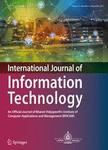版权所有:内蒙古大学图书馆 技术提供:维普资讯• 智图
内蒙古自治区呼和浩特市赛罕区大学西街235号 邮编: 010021

作者机构:Department of Computer Science and Engineering Siddaganga Institute of Technology Tumkur Visvesvaraya Technological University Belagavi 590018 India
出 版 物:《International Journal of Information Technology (Singapore)》 (Int. J. Inf. Technol.)
年 卷 期:2025年
页 面:1-12页
主 题:And modified tug of war optimization Energy efficient Signcrypted clustering Improved grey wolf optimization Krill Herd and harmony search Voronoi diagram Wireless sensor networks
摘 要:This research introduces a novel protocol to address the critical challenges of coverage, connectivity, and security in large-scale Wireless Sensor Networks (WSNs). The proposed protocol optimizes energy management, ensuring robust coverage, seamless connectivity, and secure data transmission. Initially, a distributed approach combining the Voronoi Diagram with Krill Herd and Harmony Search (KHHS) maximizes the coverage of a region of interest. The Voronoi diagram divides the region into cells, generating initial solutions for the positions of deployed IoT objects. Harmony Search is then utilized to mutate among krill during the update process, enhancing solution quality. The KHHS leverages previous information efficiently to produce superior solutions, allowing for decentralized decision-making suitable for autonomous node operations in WSNs. The protocol further employs an Energy Efficient Signcrypted Clustering (EESC) method to prolong network lifetime by managing energy consumption effectively. This involves organizing sensor nodes into clusters with cluster head selected based on an Improved Grey Wolf Optimization (IGWO) algorithm, Cluster heads strike a compromise between energy efficiency and connectivity by rotating CHs and collecting data from member nodes, reducing node depletion and ensuring multihop connection. Modified Tug of War Optimization balances the load for efficient data transmission, while lightweight encryption provides secure data exchange. The proposed model s performance is evaluated against existing techniques, demonstrating superior results in PDR (97%), end-to-end delay (75 ms), energy consumption (0.7 kJ), residual energy (30%), and minimal energy efficiency (90% with 0.1 kJ/ bits). These results highlight the protocol s effectiveness in maintaining high throughput, adapting to dynamic network changes, and ensuring secure and efficient network operation. © Bharati Vidyapeeth s Institute of Computer Applications and Management 2025.